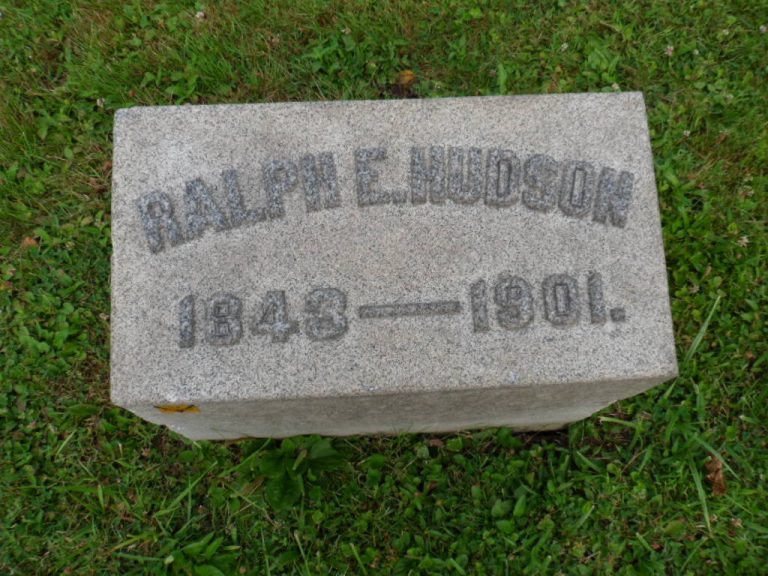Hymn History: A Glorious Church & Author: Ralph Erskine Hudson
“He often took old hymns and gave them a new tune, with a jolly, bouncing chorus.”
(Robert Cottrill)
The Origin of the Hymn “A Glorious Church”
The hymn “A Glorious Church” is a stirring declaration of the beauty, purity, and victory of Christ’s redeemed people. With its triumphant refrain—“’Tis a glorious Church without spot or wrinkle, washed in the blood of the Lamb”—this hymn has inspired generations of believers to rejoice in their place within the body of Christ. Written in the early twentieth century by Ralph Erskine Hudson (1843–1901), it reflects both the exuberant spirit of revival-era Christianity and the biblical vision of the Church as Christ’s spotless bride.
The Hymnwriter: Ralph E. Hudson
Ralph Erskine Hudson, born in Napoleon, Ohio, in 1843, was a man of many talents—teacher, soldier, musician, and evangelist. During the American Civil War, he served in the Union Army, and after the war, he devoted his life to Christian ministry. He became a teacher in public schools and later worked with the Methodist Episcopal Church as a song evangelist and music publisher.
Hudson was part of a generation of hymnwriters who carried the revival fervor of the nineteenth century into the early years of the twentieth. His work placed him in the company of other great gospel songwriters such as William Kirkpatrick, Elisha Hoffman, and Fanny Crosby. Hudson had a special gift for writing melodies and refrains that were simple, lively, and full of spiritual conviction—songs that ordinary believers could sing with joy and confidence.
Throughout his career, he compiled and published numerous hymnals, including Gospel Songs (1887), Songs of Peace, Love, and Joy (1885), and Songs of the Soul (1890). Many of his compositions gained lasting popularity, such as “At the Cross” (where he added the now-familiar refrain to Isaac Watts’s text) and “Blessed Be the Name.” But among his most enduring contributions is “A Glorious Church,” written around 1887.
Inspiration and Biblical Foundation
The inspiration for “A Glorious Church” is drawn directly from Ephesians 5:25–27, where the apostle Paul describes Christ’s love for His people:
“Christ also loved the church, and gave himself for it; that he might sanctify and cleanse it… that he might present it to himself a glorious church, not having spot, or wrinkle, or any such thing.”
This vision of a redeemed and radiant Church captured Hudson’s imagination. Living in a time of great revival activity—when camp meetings and evangelistic services stirred hearts across America—he saw firsthand the power of the gospel to transform lives. To him, the Church was not a struggling or defeated institution but a triumphant body, purified and strengthened by Christ’s saving work.
Hudson’s hymn expresses this confidence. The opening lines are a rallying cry of faith:
Do you hear them coming, brother,
Thronging up the steeps of light,
Clad in glorious shining garments,
Blood-washed garments pure and white?
These words evoke the image of the saints of God marching toward heaven—redeemed, rejoicing, and radiant in the righteousness of Christ. The hymn’s refrain follows in jubilant affirmation:
’Tis a glorious Church without spot or wrinkle,
Washed in the blood of the Lamb.
The imagery is both triumphant and tender. It celebrates the Church not as a mere human institution, but as the bride of Christ—sanctified by His sacrifice and destined for eternal glory.
The Hymn’s Music and Style
Like many of Hudson’s gospel songs, “A Glorious Church” is written in a major key with a strong, marching rhythm. It was composed to be sung with enthusiasm, making it a favorite for revival meetings, camp gatherings, and church conventions. Its melody invites participation; even those unfamiliar with hymn singing can quickly learn the refrain and join in.
The hymn’s musical style reflects Hudson’s evangelistic purpose. It is not contemplative but declarative—a song of victory meant to strengthen the faith of believers and to remind them that, despite trials and imperfections, the Church belongs to Christ and will one day stand complete before Him.
Reception and Legacy
Since its publication, “A Glorious Church” has appeared in countless hymnals across denominations, particularly within Methodist, Holiness, and Pentecostal traditions. It became a staple of 20th-century evangelistic crusades, Bible conferences, and Sunday evening services. Its joyful, militant tone resonated deeply in churches that emphasized holiness and spiritual triumph.
The hymn has also endured because it speaks to a timeless truth: the Church’s glory does not rest in human achievement but in divine grace. Even in seasons of hardship or decline, the believer can sing with confidence that Christ’s redeeming work will one day present the Church as spotless and pure before the Father.
A Testimony of Hope and Triumph
Ralph E. Hudson died in 1901, but his music continues to live on. His songs, marked by strong faith and hopeful melody, helped shape the gospel singing tradition that would influence generations to come.
In “A Glorious Church,” Hudson gave the Christian world more than a song—he gave it a vision. It reminds believers that, though the Church may appear weak or flawed in the present age, her destiny is assured. Through the cleansing power of Christ’s blood, she will one day shine with perfect beauty in His presence.
Each time the hymn is sung, its refrain renews that vision of hope and victory:
’Tis a glorious Church without spot or wrinkle,
Washed in the blood of the Lamb.
It is both a confession of faith and a glimpse of eternity—the promise that the redeemed people of God will forever stand radiant and rejoicing in the light of their Savior.
Related
Sorry, no records were found. Please adjust your search criteria and try again.
Sorry, unable to load the Maps API.

